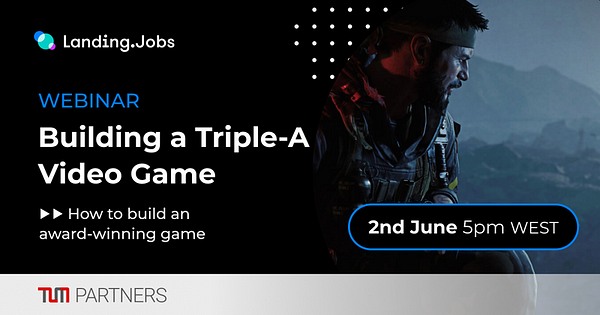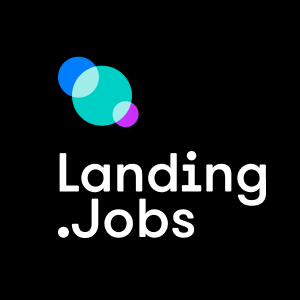TLM Partners, aka Three Little Monsters, is a cross-play focused video game development “Cloud Studio”. Having their entire studio based in the cloud, all employees and contractors work remotely, relying on cloud and SaaS products to keep the business running. They were part of the development team of iconic games like Call of Duty: Black Ops and Spellbreak, and they’re currently part of the team developing Warner Bros.’ new RPG Gotham Knights. TLM has also announced that they’ll be releasing their first indie game in the fall, Zorya: The Celestial Sisters.
TLM Partners, Inc. is, at its core, a team of veteran video game developers who have come together to solve tomorrow’s problems in the video game industry. We pride ourselves on the ability to see around certain corners, both in the technology and the market, and move more quickly than the major players. Our technologists, creative thinkers, and dreamers survey the landscape in both traditional games and adjacent industries to license, develop, and monetize software and technologies for markets coming to maturity in the next 24–48 month window. We identify and solve the needs of AAA game development as well as rapidly maturing tools and middleware for VR, AR and the next generation of human-computer interface. — TLM Partners
Dissecting TLM’s game design process
The stage gates — rationalizing the creative process and “looking forward to failure”
In a recent webinar we hosted with TLM, Jacob Hawley (CEO) and Alexis Jolis-Desautels (Head of Creative) laid out the cards and explained how they approach the game development process and how the rationalization of creativity and design help them.
Alexis told us that it started with him asking himself “how do I become more technical?”, meaning how does one fuel their instinct and their passion by using something that is technical and how do they take their ideas and transform them into something where they can solve an issue? According to him, this process of rationalizing creativity and design is not easy, as it’s all about understanding difficulty and experience. What makes a game more or less difficult? What makes it more or less involving? And, most importantly, how does a designer justify their creations? For Alexis, all these questions and doubts needed answers because all game projects start with design.
As he went deeper into the game development process, specifically in the initial stages, Alexis explained why the standard practice of using a GDD (Game Design Document) wasn’t suitable for them at TLM.
The GDD is this idea of creating this absolutely immense game design bible. You document that in Word and it ends up being 250 pages of a game. Over time we discovered that this is not the right way to approach the format. The issue with GDD is that it takes too long to produce, most developers on the team don’t really read the document in detail. And for a designer, imagine that I ask you to be absolutely right on the first go. That is not reasonable for any profession – design, art or code. We need to shift to a “fail-fast-succeed-sooner” approach. — Alexis Jolis-Desautels, Head of Creative
For Alexis, it was really hard to get developers to switch to a mindset where he expected them to fail. He didn’t want to hear that whatever they were going to do was going to be great, he wanted to know how they were going to fail first. The GDD asks the designer to be right on the first try and then the coder who takes the details from the GDD is also expected to be right on the first run, because by that point there is no time left to iterate. This is the system that Alexis wanted to break off.
So currently, the team at TLM works in a different way. They’ve broken down everything through the stagegate process. They’ve segmented everything into different phases, like preconception, conception, pre-production, production and shipping. “It’s not exactly an agile approach”, he explains, “but it’s still sequential in a way that it takes away a lot of risks.”
The pitch and the HLD — making sure all phases of the game development process are tied together

Landing.Jobs’ and TLM’s webinar
“Traditionally, a publisher issues a request for proposal and then they ask for developers to pitch, which is a very common way to work on work-for-hire and sometimes partnerships”, tells Alexis. The issue with this approach is that oftentimes there isn’t a clear link between the pitch process and the actual production process. So TLM wanted to create a process where they could go from the pitch and transition over the ownership of the project to the team who was going to build it.
And so the first thing they built off of that was the HLD, or High Level Document, which as Alexis explains, is a vision document that’s not only curated by the creative director, the art director and the technical director, but also involves a lot of people from the core team. This translates into a “huge sort of PowerPoint document thing, and that’s meant to convey a very clear vision of where the project should be.”
If you look at Grand Theft Auto as a franchise and if you ask people what Grand Theft Auto is about, most people will tell you it’s about being a gangster, and that’s the way they perceive the game. But if you ask the guys working on the team, working on that brand for years now, they’re gonna tell you ‘actually, the game is about being a tourist’. (…) The experience of the game, the real why, is about being a tourist. The way that the different locations are made, the way their marketing campaign is built, everything is actually trying to lure you over as a tourist. This level of creation requires you to segment things in a certain way and this is what the HLD is trying to do. — Alexis Jolis-Desautels, Head of Creative
So the GDD doesn’t exist in this process TLM follows, it’s been replaced by many different documents that are meant to be created and proposed at the right time. Instead of having a 250-page Word document about the whole game, they have split everything into a mapping of all the different features.
Mid Level Design and prototypes
If you do GTA, you have the locations, enemies, weapons, progression system, day and night cycle, police — all these different systems are broken down and each one has their own MLD. — Alexis Jolis-Desautels, Head of Creative
All of these components of Mid Level Design are presented to everyone on the project’s team, as Alexis explains, so everyone understands the story and they can raise flags and ask questions. “And then we have this loop between the rational design stuff, the mid level design stuff, all the while we’re making discoveries about where we will fail first.”, and this is where prototypes come in. In TLM’s process, contrary to what usually happens with most developers, prototypes need a clear plan that derives from the MLDs and the rational process.

Gotham Knights, for Warner Bros.
Signing off the features — the final piece of the puzzle
Finally, and not least importantly, comes the FSO, or in other words, the Features Sign-Off. “It’s a method that comes from (…) Assassin’s Creed, Far Cry, all the big brands in Ubisoft used this. It’s really important for devs, for tasking on a process.”, says Alexis. He explains that this is all about the low-level specs. Before the team starts building things, they need proper design specs, so they use an excel sheet that breaks down in detail every single piece of tasking they need for a certain feature. For them, this stage comes last and at the right time.
The idea is that you start doing FSOs, and when you go into production everyone knows what to do. Every question is answered. By the time you hit that spot, everyone has failed very often (…) and you discover that recipe that everyone is looking for and you’re to go straight into production. — Alexis Jolis-Desautels, Head of Creative
Alexis stresses out that this isn’t just about formalizing or rationalizing design as a trade, but it’s also about applying that approach to the game development pipeline as a whole.
They are also applying the same method when approaching publishing. In order to be able to build a publishing pipeline and to be able to work with developers, they need to have a clear understanding of what those developers need to provide them and when, and how it can help iterating.
TLM’s main goal is to make sure that they can either build themselves or help other teams build a product that is focusing on the right things, and solving a lot of the issues that come with any creative endeavor.
TLM’s plans to build their own games
As Jacob Hawley says, TLM started to build cross-play games because they realized there were a lot of people playing them. They built Spellbreak for Proletariat, a cross-play game that is a direct competitor to Fortnite for example, and they have others in the pipeline.
Chapter 1: The Spellstorm is available now for @PlaySpellBreak @proletariat_inc! We are proud of this partnership and the opportunity to be a part of the development team! https://t.co/dI3Stkv3eL
— TLM Partners (@TLM_Partners) December 15, 2020
Simultaneously they want to continue their work-for-hire projects, like the one they did with Sony, but they have reached the point where they want to publish their own games.
So our work-for-hire goes up [this year], next year it goes flat as we launch our first three titles that are our own original IPs, then after that we expect to do about 5 titles and the year after that about 8. We are very literally becoming the Netflix of cross-play video-games. We’re becoming very well-known for it technologically, we’ve got companies like Activision, that we’ve partnered with on Call of Duty, Warner Bros., that we’ve partnered with on their Batman title and their Back for Blood title, and there’s more in the pipeline. — Jacob Hawley, CEO
Jacob says they’re also very actively going after Esports and PC and console games, and the reason being that they want to challenge the old ways, in which for many years Playstation developers could only play Playstation, Mac developers could only play with Mac people, PC developers could only play with PC people, mobile developers could only play with mobile people, and so on. For TLM, cross-play enables any one of those to play with anyone else. “Instead of having 800 million console users, 600 million PC users and 80 million Nintendo Switch users, you’ve got 2 billion people that you can go and play with. So the audience for our games is so much larger and so much more powerful.”, as Jacob explains.

You can also watch our webinar on how TLM Partners build award-winning Triple-A video games here!
A remote but connected culture
At TLM, they’re great believers in developing a cohesive work culture, especially as they’ve adopted a remote and global workforce. Although people may work from different corners of the globe, that doesn’t stop them from bonding over shared interests and team building activities.
They have “dedicated channels and groups for sharing fun photos, articles, and discussions around non-work related topics”, and host events like “cooking demonstrations, fitness classes, language lessons, and professional development seminars”.
Hunting for the best tech talent
TLM is actively looking for the next generation of game developers, and they’re broadening their horizons.
They recently hosted an international Game Jam in Mexico City, where students were challenged to create video games over the course of a week. The best thing is they’re going to publish 3 of the 15 games submitted and they’ve hired 5 students as interns.
(…) that’s just an example of how much we want to engage people that are from underserved communities, underserved marketplaces — South America, Asia, Eastern and Southern Europe, places where you wouldn’t normally go. We’re finding amazing sparks, amazing genius, amazing creativity, designers, artists, engineers, and everything in between. Portugal, for us, is a natural place for us to sort of land. It’s on the westernmost point of the continent and it’s an easy place for us to expand our footprint. — Jacob Hawley — CEO
As Jacob says, “if you’re a good engineer, a good developer, a good designer, there’s always an opportunity to join QA.” According to him, there are many people who find careers in the gaming industry by starting in the QA department, because there they get to understand what the game development process really looks like and get to discover where, in that process, they want to work in.
Matching You with Your Future!






0 Comments